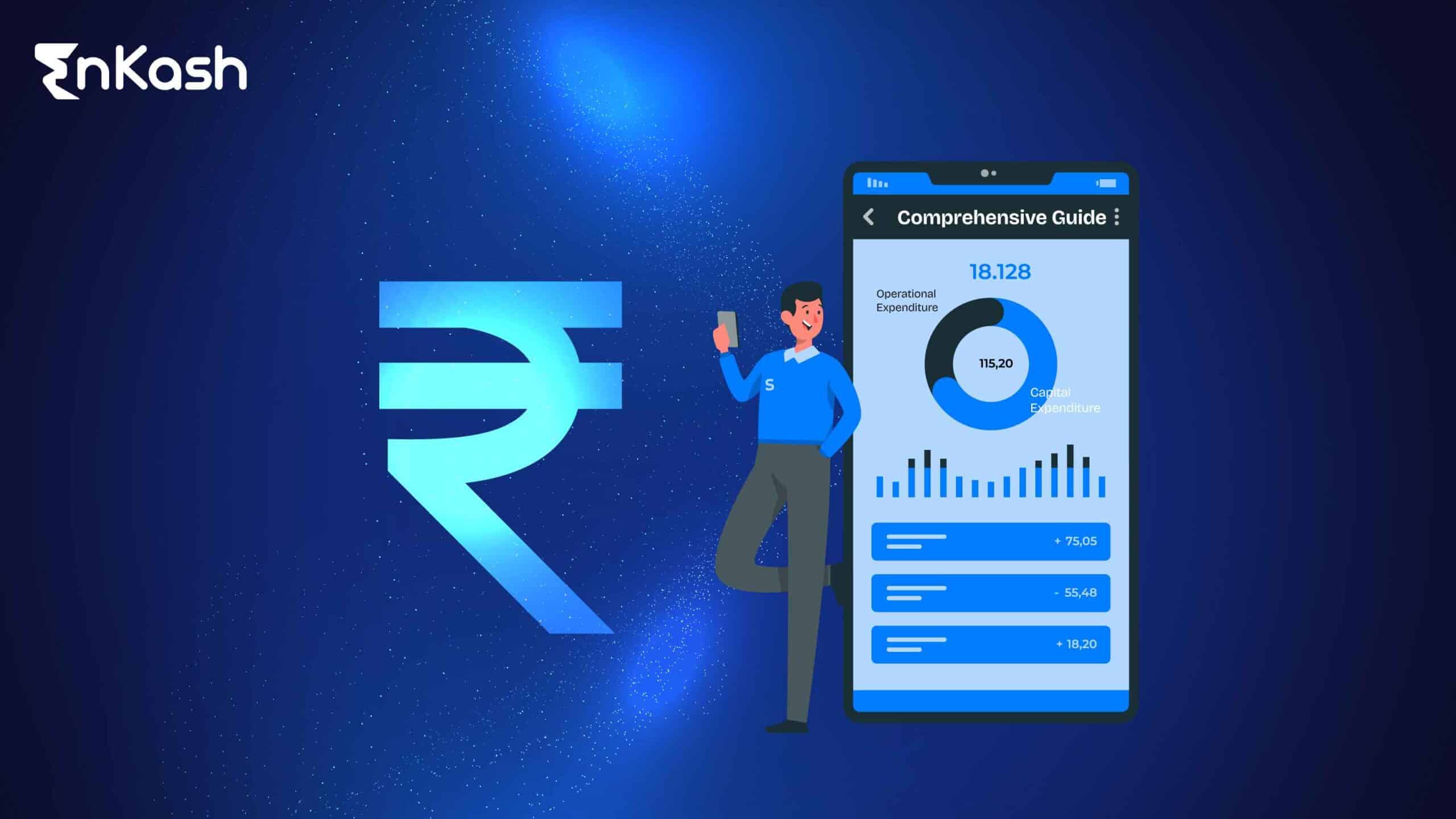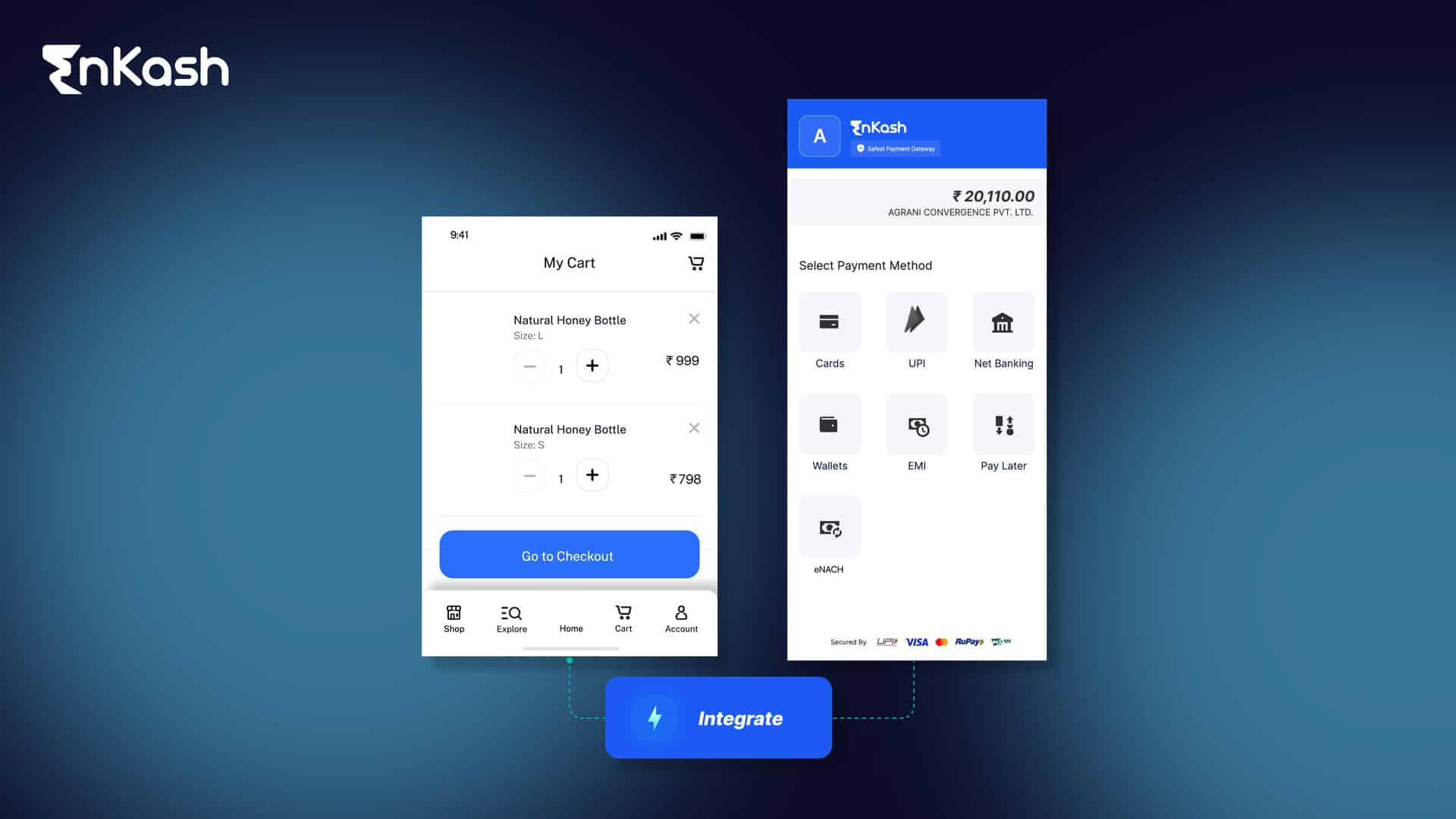Capital expenditures (CapEx) and operating expenses (OpEx) are two core categories of business expenditures that affect a company’s profitability and growth. Knowing these terms and the difference between them is crucial for financial planning and budgeting.
CapEx is the investment for long-term growth, while OpEx refers to the daily operating expenses incurred to get a business up and running. The blog will look at the difference between CapEx and OpEx, focusing on their scope, payment timelines, accounting treatment and tax implications. We will also look at CapEx vs. OpEx examples to understand their distinct functions better.
What is CapEx?
CapEx is the capital investment a business makes to acquire or improve assets for long-term operations and expansion. These assets (buildings, equipment or technology) generate increased productivity and business capability, thus laying the foundation for future growth. In contrast to operating expenses, CapEx is a high-value investment that typically adds value over a number of years for the organization.
Examples of CapEx
- Purchasing real estate for corporate headquarters, factories or warehouses.
- Upgrading or adding new equipment to enhance productivity.
- Investing in technology, software solutions or making hardware upgrades.
- Building a vehicle fleet for efficient delivery and movement.
Key Characteristics of CapEx
- Future Benefits: CapEx investments typically provide returns over several years.
- Initial Cost: CapEx projects require high upfront investments.
- Building Assets: CapEx projects have assets that are listed on the balance sheet. With depreciation, its costs are spread over its useful life cycle.
What is OpEx?
OpEx are the ongoing costs incurred by a company on a day-to-day basis. In contrast to CapEx, which invests in long-term assets, OpEx is used to cover short-term costs for everyday business activities like rent, salaries, and energy bills. OpEx is typically less expensive than CapEx but pays out more often so is extremely important in financial planning.
Operating expenses (OpEx) refer to the recurring costs necessary for a company’s day-to-day operations. Unlike CapEx, which involves investments in long-term assets, OpEx is allocated toward short-term expenses that support regular business functions, such as rent, salaries, and utility bills. OpEx is often less costly than CapEx but is paid out frequently and therefore needs to be budgeted carefully.
Examples of OpEx
- Monthly charges for rental or leased property.
- Recurring salaries, wages and benefits for employees.
- Recurring energy, water, and internet costs to maintain business.
- Costs of keeping the equipment in working order.
Key Characteristics of OpEx
- Repeating Nature: OpEx is an expense that’s made on a regular basis, like every month or year.
- Same Period Tax Management: Taxes for these costs are deducted in the same accounting period they are paid for.
- Directly Impacts Income: OpEx is directly reported to the income statement, thus affecting net profit during the same accounting period.
Read more: Difference between Expense and Expenditure
Key Differences Between CapEx and OpEx
Learning the differences between CapEx and OpEx will allow companies to make informed financial decisions in alignment with operational and strategic objectives. Let’s explore these expenditure differences below.
1. Scope of Expenditure
- CapEx Scope: Capital expenditures are major expenditures for fixed assets such as plants or equipment that provide the company with a greater growth potential. These initiatives are beyond the day-to-day operations, with the goal of fostering future success and competitive advantage.
- OpEx Scope: Operating costs are regular expenditures that are needed for daily operations like salaries, utilities, to sustain the function. OpEx, in contrast to CapEx, prioritizes immediate needs over growth or upgrade.
Read more: Rental Payment
2. Payment Timelines
- CapEx Payment Timeline: CapEx generally requires a large upfront payment for long-term assets, impacting immediate cash flows. Some companies may even finance this initial outflow with loans and spread the costs in the long run.
- OpEx Payment Timeline: OpEx involves periodic, predictable (monthly or annual) payments that are easier to forecast and keep cash flows stable according to business requirements.
3. Approval Process
- CapEx Approval Process: CapEx projects tend to have a long approval, executive reviews and extensive planning phase as it is expensive and financially significant.
- OpEx Approval Process: Basic OpEx expenses generally don’t require extensive approval as they are routine, but there might be budgeting controls in place to prevent overspending.
4. Control Over Assets
- CapEx Control: With CapEx, companies own and control assets, thus they can operate, modify, and repair them as necessary. That freedom enables organizations to tailor asset use to business needs and to customize them accordingly.
- OpEx Control: OpEx is usually for lease or rented assets where the company has limited control over it. Maintenance and major upgrades are handled by third parties, which limits flexibility and decreases maintenance overhead.
5. Accounting Treatment
- CapEx Accounting: Capital expenditures are accounted for on the balance sheet as assets and depreciate over time. The cost of the asset is amortized over its useful life, allowing organizations to track costs on the income statement.
- OpEx Accounting: Operating expenses are recorded immediately on the income statement in the period they are incurred, directly reducing net profit for that period. This immediate expensing aligns with OpEx’s purpose of supporting current operations without investing in long-term assets.
6. Tax Implications
- CapEx Tax Treatment: CapEx can’t be fully deducted in the year it’s paid but companies offset the expense over time by depreciating or amortizing it, giving them a tax deduction benefit in the long term by dispensing deductions over several years.
- OpEx Tax Treatment: OpEx can be fully deducted in the year it is paid, thereby providing immediate tax benefits and lowering the taxable income for the year in question. This deduction can help companies manage short-term cash flow.
Read more: Types of GST Returns
Strategic Importance of CapEx and OpEx Management
Understanding the concept of CapEx vs. OpEx and effectively managing them is essential for a company’s future success and stability. With CapEx, businesses focus on high-return projects that are strategically relevant to the organization’s goals, and these large investments ensure sustainable value. OpEx Management is about managing recurring costs to maximize profits and keep things running smoothly. CapEx and OpEx should be carefully balanced to help ensure companies maximize cash, stay on track and support both current and future initiatives.
Impact on Cash Flow
Capital Ex and OpEx impact the cash flow of a company differently. CapEx is a large one-time investment that typically results in a huge outflow at first. This major cost negatively affects short-term liquidity but will ultimately create revenue as the asset begins to serve the business.
OpEx, by contrast, is a scheduled payment that affects cash flow over time and can be more easily anticipated and budgeted. CapEx needs to be scheduled carefully to avoid draining cash flow, while OpEx management consists of controlling recurring costs so that there’s a financial cushion for other investments or unexpected costs.
Investors’ Perspective
CapEx and OpEx are the two parameters investors use to analyze a company’s financial position and growth prospects. High CapEx spend can be an indication of growth goals, which implies the firm is acquiring assets to ramp up its capacity and enhance future profits. Yet excessive CapEx without demonstrable returns can raise questions of over-investment or cash flow problems.
OpEx efficiency, however, represents good cost control. Investors care about the ratio of OpEx to revenue as high OpEx drives down profitability. Balanced CapEx and OpEx tells investors that the company is both long-term focused and cost-effective, which can be taken as a sign of long-term stability and profitability.
Read more: Expense Management
Effective Management of CapEx
Well-executed CapEx management makes sure that companies achieve the best return on their long-term investment by utilizing available resources.
- Prioritization: Organizations usually prioritize CapEx projects on the basis of return on investment (ROI) and strategic alignment. This allows companies to focus funds on projects with the highest potential benefits such as production increase or a better product.
- Budgeting and Tracking: As there is an upfront cost involved, businesses make budgets and monitor the expenditures in detail to avoid overspending. Such systematic administration makes sure CapEx projects add value without depleting financial funds in the process.
Effective Management of OpEx
Optimizing OpEx is essential to stay profitable and manage daily expenses.
- Monitoring Costs: Regular monitoring allows companies to find cost saving opportunities without compromising quality. For example, sourcing from the right suppliers or optimizing utility costs can have major effects on overall profit.
- Automation and Efficiency: Organizations often invest in technology and workflow automation to reduce recurring OpEx. Automating routine tasks or making smarter energy choices will allow companies to reduce operating expenses and increase cash flow to put more money towards high-priority projects.
Read more: Expense Management Software
Benefits and Drawbacks of CapEx
Now that we have seen the difference between CapEx and OpEx, let’s understand their significant benefits and drawbacks.
Benefits of CapEx:
- Capital investments can pay off in the long run. Buildings, machinery, and technology are enduring assets that keep operations and expansion going for years, making them sustainable.
- Companies can increase production capacity with new or upgraded equipment in order to keep up with increasing demand or optimize processes.
- Asset ownership gives the company full autonomy to tailor assets and manage maintenance internally, reducing the need for third-party services.
Drawbacks of CapEx:
- A large upfront investment is required in CapEx projects which may put pressure on cash flow and overall liquidity and limit a business’s flexibility to pursue other possibilities.
- Since CapEx projects are expensive and long-term, they often need to be planned for, researched and obtain executive approval resulting in delays in implementation and administrative complexity.
- In the case of technology-based industries, assets are susceptible to being outdated quickly. Assets that become irrelevant or inefficient decrease ROI and create a need for replacement.
Benefits and Drawbacks of OpEx
OpEx is the backbone of day-to-day business functions, but it has its advantages and disadvantages. Here are some of the major OpEx pros and cons.
Benefits of OpEx:
- Operating costs can be changed to meet the needs of the day. Organizations are free to increase or decrease spending in response to the market and operating demands.
- Since OpEx expenses are paid over time, they are simpler to budget and don’t come with the financial burden of a massive, one-time investment.
- OpEx can be completely deducted within the same timeframe as it was paid for, providing immediate tax savings and lowering taxable income which improves cash flow.
Drawbacks of OpEx:
- The ongoing nature of operating costs means costs can accumulate over time and become financially stressful if not managed well or optimized.
- OpEx spending is focused on existing operations instead of new assets. This lack of tangible asset creation usually means that OpEx does not translate to much in terms of return on investment over the long term.
CapEx and OpEx in Industry Examples
CapEx and OpEx are used in various sectors for a company’s long-term investment and day-to-day operations. Let’s learn how these costs are being accounted for by the different industries.
Tech Industry
In technology, companies have to decide between owning (CapEx) or renting infrastructure (OpEx).
- CapEx: Large enterprises can create data centres to own the infrastructure completely.
- OpEx: Small tech companies can rent services from cloud providers such as AWS and scale with a low initial cost.
Manufacturing
Typically, manufacturers consider CapEx to be a long-term equipment expenditure and OpEx to be an everyday operating expenditure.
- CapEx: Investing in automated equipment increases productivity and lowers labor costs over the long run.
- OpEx: Capital and material costs, energy, and human labor keep the daily process of production steady.
Retail
CapEx is used in the retail sector to improve the customer experience and OpEx is used for daily operations.
- CapEx: Open new stores or implement POS upgrades to support future expansion.
- OpEx: Including rent, salaries, and marketing to keep the business flowing and service customers.
Transportation and Logistics
CapEx and OpEx help logistics companies control their fleets and adapt to shifts in demand.
- CapEx: With the purchase of delivery trucks, businesses control the maintenance and overall cost savings.
- OpEx: Vehicles can be leased for seasonal needs while fuel and upkeep costs are continuously required for daily activities.
Healthcare
Healthcare professionals pay CapEx for advanced equipment and OpEx for routine patient care.
- CapEx: Purchasing MRI machines or expanding facilities for improved patient services.
- OpEx: These involve costs for medical supplies, employee salaries, and compliance training required for daily services.
Conclusion
Getting the difference between CapEx and OpEx right is crucial for financial planning and strategic decision-making. CapEx are major investment in assets for a business’s long-term development like machinery, plants and infrastructure, while OpEx is the regular cost of operating a business day-to-day like rent, wages, and utilities.
With the right control of these costs, companies can juggle both the immediate demands and long-term objectives to maximize operational efficiencies and sustainable expansion. Financial analysts help in the process by providing insights into spending behaviors and guiding investments that meet business objectives. Using tools and methods to monitor and control CapEx and OpEx spend, companies can get maximum ROI, manage costs, and remain competitive.
CapEx vs. OpEx are complementary expenditure types whose management can help companies position themselves better and stay relevant in an evolving market.
FAQs
What is the primary difference between CapEx and OpEx?
CapEx or capital expenditure are massive long-term purchases of properties, equipment, and infrastructure. OpEx or operating expenses include daily expenses that are necessary for a company to survive like rent, utilities, and salaries.
Why do companies compartmentalize CapEx and OpEx in financial planning?
Splitting CapEx and OpEx allows businesses to spend according to their financial targets. CapEx is for long term expansion and asset acquisition, OpEx is for day-to-day operations. That distinction helps with budgeting, forecasting and tax planning.
What is the accounting difference between CapEx and OpEx?
CapEx becomes an asset on the balance sheet and depreciates over time, while OpEx gets completely expensed on the income statement for the duration it is paid. This distinction represents CapEx’s long-term return vs. OpEx’s quick operational functionality
Are CapEx expenses tax-deductible?
Capital expenditures aren’t completely tax-deductible in the year of their purchase. Rather, they are taken out over the asset’s lifetime, gradually by depreciation. OpEx costs, by contrast, can be deducted in full in the same year, so companies immediately get tax benefits.
Why would a company rent (OpEx) rather than purchase (CapEx)?
OpEx – leasing, is flexible and doesn’t require hefty upfront purchases. It’s handy for companies with immediate requirements or for rapidly-changing technologies where CapEx might lead to obsolescence.
What are the functions of financial analysts in managing CapEx and OpEx?
Financial analysts evaluate CapEx and OpEx spending and determine if they are in alignment with strategic objectives. They calculate ROI, monitor costs and advise on the best way to use resources so that the company’s ambitions of expansion are met while being effective.
Can a single expense fall under both CapEx and OpEx?
Costs are typically either CapEx or OpEx depending on their type. But in cases such as IT software, they might be CapEx (a long-term license) or OpEx (a recurring subscription), depending on the use and conditions of the company.
How does effective CapEx and OpEx control have an impact on business performance?
Effective CapEx management allows long term investments that contribute to growth and productivity while OpEx management prevents high operational costs. Together, they are responsible for financial stability, profitability, and healthy business development.













